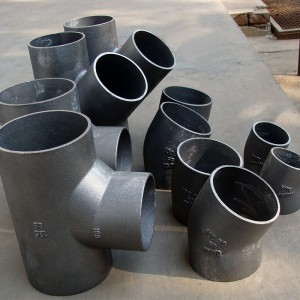- Afrikaans
- Albanian
- Amharic
- Arabic
- Armenian
- Azerbaijani
- Basque
- Belarusian
- Bengali
- Bosnian
- Bulgarian
- Catalan
- Cebuano
- China
- China (Taiwan)
- Corsican
- Croatian
- Czech
- Danish
- Dutch
- English
- Esperanto
- Estonian
- Finnish
- French
- Frisian
- Galician
- Georgian
- German
- Greek
- Gujarati
- Haitian Creole
- hausa
- hawaiian
- Hebrew
- Hindi
- Miao
- Hungarian
- Icelandic
- igbo
- Indonesian
- irish
- Italian
- Japanese
- Javanese
- Kannada
- kazakh
- Khmer
- Rwandese
- Korean
- Kurdish
- Kyrgyz
- Lao
- Latin
- Latvian
- Lithuanian
- Luxembourgish
- Macedonian
- Malgashi
- Malay
- Malayalam
- Maltese
- Maori
- Marathi
- Mongolian
- Myanmar
- Nepali
- Norwegian
- Norwegian
- Occitan
- Pashto
- Persian
- Polish
- Portuguese
- Punjabi
- Romanian
- Russian
- Samoan
- Scottish Gaelic
- Serbian
- Sesotho
- Shona
- Sindhi
- Sinhala
- Slovak
- Slovenian
- Somali
- Spanish
- Sundanese
- Swahili
- Swedish
- Tagalog
- Tajik
- Tamil
- Tatar
- Telugu
- Thai
- Turkish
- Turkmen
- Ukrainian
- Urdu
- Uighur
- Uzbek
- Vietnamese
- Welsh
- Bantu
- Yiddish
- Yoruba
- Zulu
Oct . 16, 2024 22:43 Back to list
Optimal Temperature Differential for Efficient Heat Exchanger Performance Analysis
Understanding Approach Temperature in Heat Exchangers
Heat exchangers play a crucial role in various industrial applications, transferring heat between two or more fluids. The efficiency and effectiveness of a heat exchanger heavily depend on its design and operating conditions. One critical factor that engineers consider when designing and operating heat exchangers is the approach temperature. This article will delve into the concept of approach temperature, its significance, and how it affects the performance of heat exchangers.
What is Approach Temperature?
Approach temperature is defined as the difference between the temperature of the hot fluid and the temperature of the cold fluid at the outlet of the heat exchanger. More specifically, it can be expressed as
\[ \text{Approach Temperature} = T_{\text{hot, outlet}} - T_{\text{cold, inlet}} \]
This metric helps in evaluating how close the exiting temperatures of the hot and cold fluids can get to each other. A smaller approach temperature indicates that the heat exchanger is operating efficiently since it signifies that the hot fluid is able to transfer most of its heat to the cold fluid.
Importance of Approach Temperature
The approach temperature is vital for several reasons
1. Performance Indicator A lower approach temperature indicates better performance of the heat exchanger. It signifies that the heat exchanger can extract more thermal energy from the hot fluid, thereby maximizing heat recovery and improving energy efficiency.
2. Design Considerations During the design phase, engineers use approach temperature to select the right type and size of heat exchanger. A high approach temperature may result in a need for a larger heat exchanger or an alternate design to improve thermal performance.
approach temperature for heat exchanger

3. Economic Implications The efficiency determined by the approach temperature can significantly impact operational costs. A heat exchanger that operates effectively with a low approach temperature can lead to lower fuel consumption and cost savings over time.
4. Optimization of Energy Use In processes that require precise temperature control, such as in chemical processing or power generation, managing the approach temperature is crucial to ensure optimal energy use.
Factors Affecting Approach Temperature
Several factors influence the approach temperature in heat exchangers
1. Heat Exchanger Design Different designs, such as shell-and-tube, plate, and finned tube exchangers, have varying efficiencies in heat transfer. The choice of design affects the achievable approach temperature.
2. Flow Arrangement The flow configurations, whether counterflow, parallel flow, or crossflow, significantly affect the temperature profiles. Counterflow configurations typically yield lower approach temperatures compared to parallel flow due to the higher temperature differential throughout the heat exchanger.
3. Heat Transfer Coefficients The effectiveness of heat transfer between the two fluids is influenced by the thermal conductivity of the fluids, flow rates, and the heat exchanger surface area. Higher heat transfer coefficients can reduce approach temperatures.
4. Operating Conditions Variations in flow rates, inlet temperatures, and physical properties of the fluids can alter the dynamics of heat exchange, affecting the approach temperature.
Conclusion
Approach temperature is a critical factor in the design and operation of heat exchangers. It serves as an indicator of thermal performance and efficiency, guiding engineers in optimizing energy use and ensuring economic operation. Understanding the relationships between approach temperature, heat exchanger design, and operating conditions allows for better decision-making in industrial applications. As industries increasingly strive towards energy efficiency and sustainability, the focus on parameters like approach temperature will only continue to grow, emphasizing its importance in the realm of thermal management. By minimizing approach temperature, industries can enhance performance, reduce costs, and contribute to a more sustainable future.
-
8mm Thin-Walled Cast Steel Manhole Cover Pallet Bottom Ring | Durable
NewsAug.04,2025
-
Premium Cast Iron Water Main Pipe: Durable, Corrosion-Resistant
NewsAug.03,2025
-
Durable Cast Iron Water Mains | AI-Optimized Systems
NewsAug.02,2025
-
High-Efficiency Propane Boiler for Baseboard Heat | Save Energy
NewsAug.01,2025
-
Premium Source Suppliers for Various Gray Iron Castings
NewsJul.31,2025
-
Durable Cast Iron Water Main Pipes | Long-Lasting
NewsJul.31,2025


